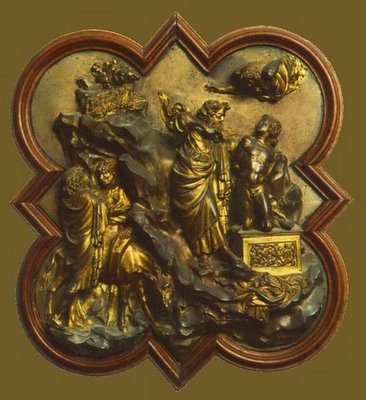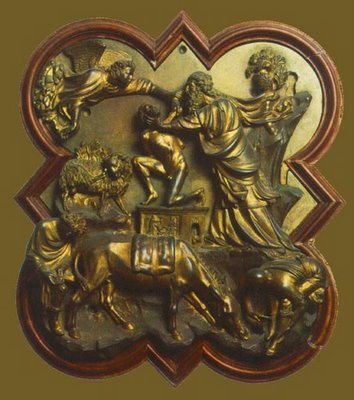
A more detailed map can be found here.
We'll be talking mostly about Jacob.





"We have compared these two texts [from Genesis and Homer], and, with them, the two kinds of style they embody, in order to reach a starting point for an investigation into the literary representation of reality in European culture. The two styles, in their opposition, represent basic types:More about Mimesis here and here. Auerbach's description might be useful to keep in mind when we take a few minutes during the session to look at some of Rembrandt's images of Abraham and other Old Testament figures with Arline.
- on the one [Homeric] hand fully externalized description, uniform illumination, uninterrupted connection, free expression, all events in the foreground, displaying unmistakable meanings, full elements of historical development and of psychological perspective;
- on the other [Biblical] hand, certain parts brought into high relief, others left obscure, abruptness, suggestive influence of the unexpressed, "background" quality, multiplicity of meanings and the need for interpretation, universal-historical claims, development of the concept of the historically becoming, and preoccupation with the problematic." Mimesis, chap. 1.



The story of Gilgamesh was first discovered in the library of King Assurbanipal of Nineveh, written on twelve tablets. "Gilgamesh's life and his adventures during his unsuccessful quest for immortality are told on eleven of the twelve tablets." The twelfth tablet is "a description of the nether world, in which Gilgamesh rules after his death as divine judge over the shades, guiding and advising them. . ."
As Siduri the barmaid tells Gilgamesh: "'You will never find that life for which you are looking. When the gods created man they allotted to him death, but life they retained in their own keeping.'" More here.




